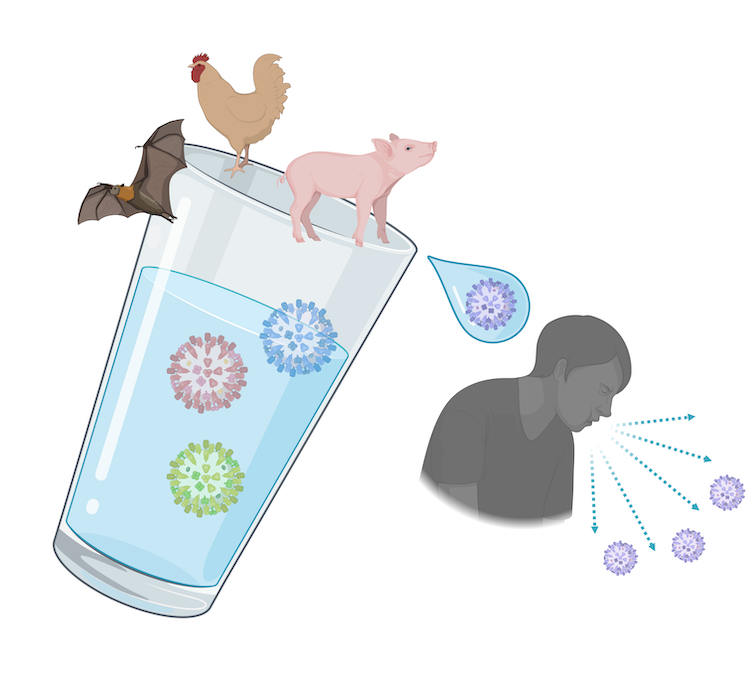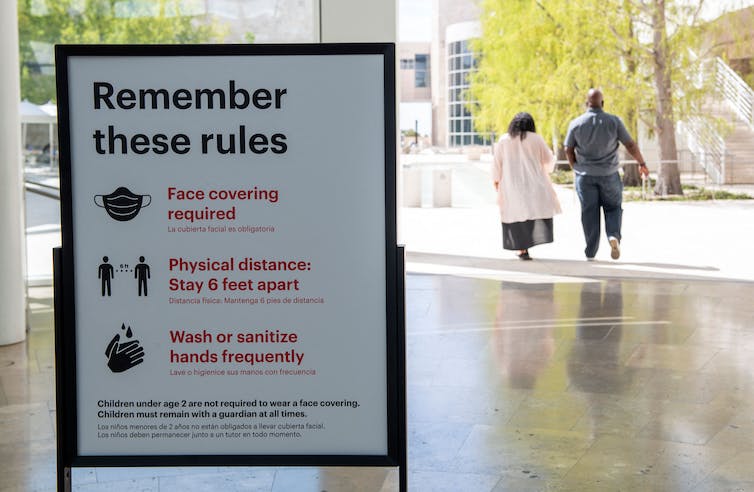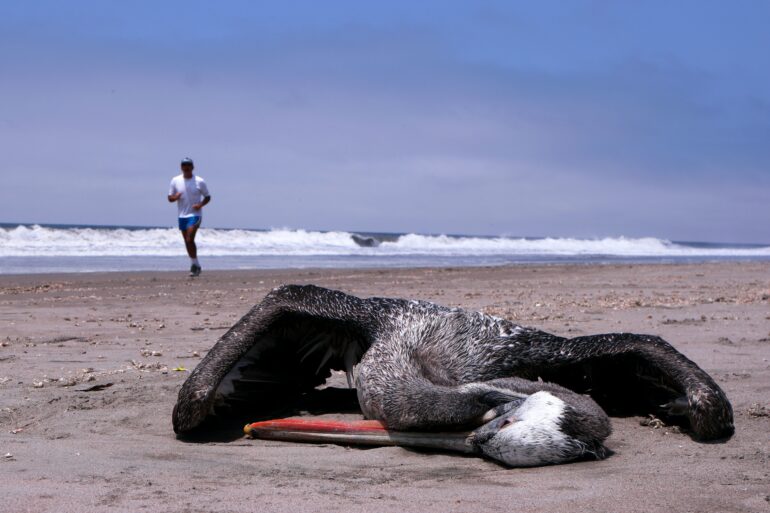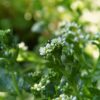The current epidemic of avian influenza has killed over 58 million birds in the U.S. as of February 2023. Following on the heels of the COVID-19 pandemic, large outbreaks of viruses like bird flu raise the specter of another disease jumping from animals into humans. This process is called spillover.
I’m a veterinarian and a researcher who studies how diseases spread between animals and people. I was on the Colorado State University veterinary diagnostic team that helped detect some of the earliest cases of H5N1 avian influenza in U.S. birds in 2022. As this year’s outbreak of bird flu grows, people are understandably worried about spillover.
Given that the next potential pandemic will likely originate from animals, it’s important to understand how and why spillover occurs – and what can be done to stop it.

Viral spillover occurs when a virus spills out from an animal population into people.
Treana Mayer/BioRender, CC BY-ND
How spillover works
Spillover involves any type of disease-causing pathogen, be it a virus, parasite or bacteria, jumping into humans. The pathogen can be something never before seen in people, such as a new Ebola virus carried by bats, or it could be something well known and recurring, like Salmonella from farm animals.
The term spillover evokes images of a container of liquid overflowing, and this image is a great metaphor for how the process works.
Imagine water being poured into a cup. If the water level keeps increasing, the water will flow over the rim, and anything nearby could get splashed. In viral spillover, the cup is an animal population, the water is a zoonotic disease capable of spreading from an animal to a person, and humans are the ones standing in the splash zone.
The probability that a spillover will occur depends on many biological and social factors, including the rate and severity of animal infections, environmental pressure on the disease to evolve and the amount of close contact between infected animals and people.

Epidemiologists estimate that three-quarters of all new infectious human diseases originated in animals.
Valerie Macon/AFP via Getty Images
Why spillover matters
While not all animal viruses or other pathogens are capable of spilling over into people, up to three-quarters of all new human infectious diseases have originated from animals. There’s a good chance the next big pandemic risk will arise from spillover, and the more that’s known about how spillovers occur, the better chance there is at preventing it.
Most spillover research today is focused on learning about and preventing viruses – including coronaviruses, like the one that causes COVID-19 and certain viral lineages of avian influenza – from jumping into humans. These viruses mutate very quickly, and random changes in their genetic code could eventually allow them to infect humans.
Spillover events can be hard to…



